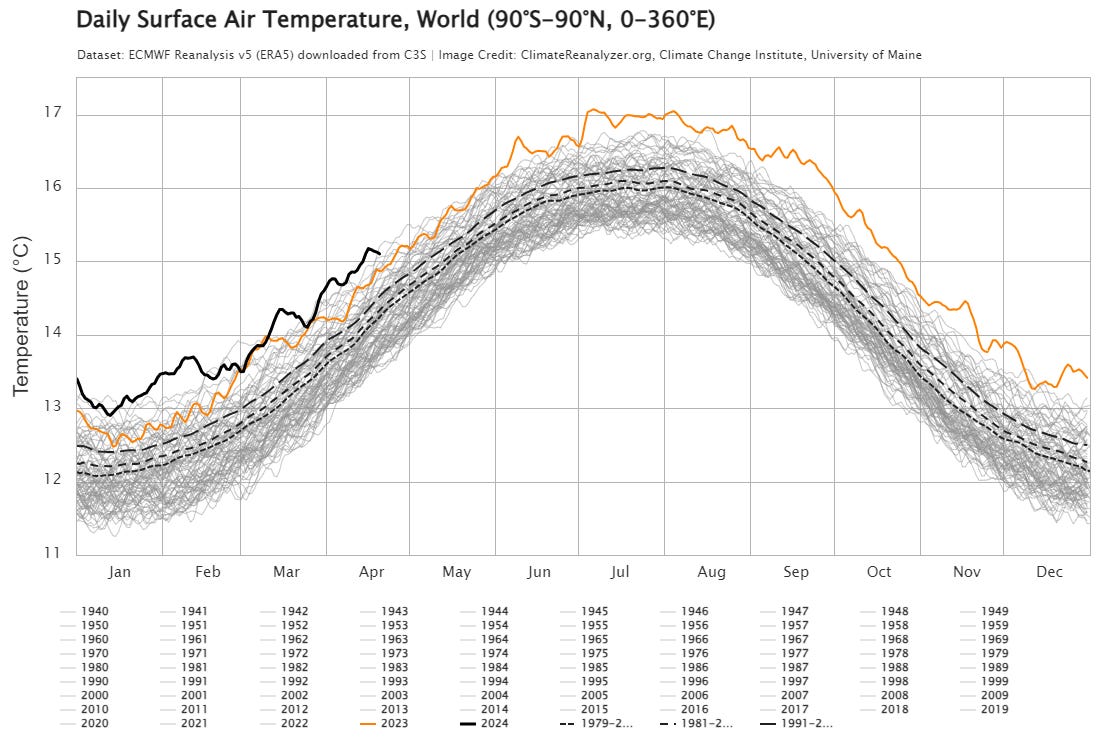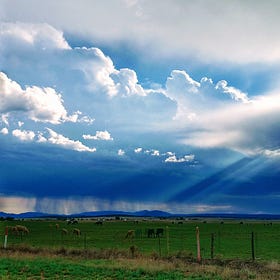2024 mosquito season could be bad in New Mexico
After 10 months straight of record-breaking heat, who knows what's possible in 2024. To reduce risk of mosquito-borne diseases, take steps to reduce mosquitos around you.

Climate change will present itself in unfortunate ways.
One unfortunate presentation is the increased presence of mosquitos. Mosquitos are not only annoying but pose a real danger to society with their ability to quickly spread diseases like Zika, West Nile, Heartworms, and more.
You may remember last year’s aggressive mosquito season - mosquitos were plentiful thanks to record-breaking heat and late spring rain. Anecdotally, I noticed the increase in mosquitos in Albuquerque and heard from others that places like Taos had become mosquito havens thanks to the heat. Along with the mosquitos came the highest West Nile numbers nationwide for New Mexico’s neighbor to the North.
Odds are you won’t catch a mosquito-borne disease, but it’s important to do what you can to reduce the risk of it happening to you or someone around you.
Mosquitos like warm (but not too warm) temperatures and standing water to breed - and climate change is broadening the areas in which mosquitos can successfully do that. In October, I wrote about how climate change is increasing the amount of “mosquito days” around the world:
Climate models (which have been surprisingly correct since the 90s) predict mosquito habitat to spread much further North and South from the equator in the coming decades:
I’ve been starting to see the first mosquitos of the year for the past couple of weeks, and it’s made me wonder what this year’s mosquito season will look like given the ongoing record heat we are experiencing. March was the hottest March of all time and the 10th record-breaking month in a row:
Furthermore, ocean temperatures are still unprecedentedly high:
While El Nino undoubtedly helped increase the heat over the past several months, climate-changing emissions are the main culprit. The temperature data is clear, but climatologists don’t exactly know what the negative effects will be, especially short term. Yes, it’ll be hotter, and extreme weather events will be more and more common, but what about more local phenomena like mosquito intensity?
Depending on where you live, mosquito days have either been increasing or decreasing. Some places, like Southern Texas, are experiencing fewer mosquitos days because it’s getting too hot. Other places like Albuquerque have seen huge increases in mosquito days because there are more humid days between 50 and 95 degrees F. This map, published before our last 10 months of record-breaking heat, shows the regional changes in mosquito days since 1979:
Recent News headlines around the US show a bad mosquito season has already started in some places. Puerto Rico declared a public health emergency as mosquitos spread Dengue fever, and Minnesota called in seasonal workers three weeks early to tackle the mosquito population.
Now, we know 2024 will be hot, but temperature is only part of the mosquito success equation - the other variable is moisture. New Mexico is currently in a drought, but where there is water, you’ll find mosquitos. Puddles of water often form near the Rio Grande, poorly drained parking lots, or in any cup-like container left outside. Mosquitos can breed in a body of water as small as a Coke bottle cap.
Since short-term precipitation is hard to predict, it’s impossible to tell how bad the mosquito season will be. That being said, it has the potential to be bad every year moving forward until climate change is checked. May of 2023 saw more rain in New Mexico than in years prior. Combined with the record heat we saw last summer, that moisture kicked off a pretty rough mosquito season in Albuquerque. If we start seeing more moisture (like the forecast is showing) it could be another bad mosquito year.
Starting now, do what you can to reduce mosquitos in your yard. Not just because they’re a pest to you, but because too many of them are a risk to our public health.
Here are a few things you can do to reduce mosquito-carrying diseases around your home:
Bring inside all cups, bowls, and plates that might collect water in the event of rainfall. Make sure your yard has sufficient draining capacity to reduce standing water.
Report large amounts of mosquitos to your local 311 dispatch. Most cities have dedicated staff that will spray the area for you.
Implement mosquito traps and repellents in your yard and around your home. You can buy these products or easily make DIY mosquito traps to save money.
Put Mosquitofish in nearby ditches, ornamental ponds, bird baths, watering troughs, or retention ponds to control mosquito breeding. Do your research to make sure Mosquitofish will not negatively disrupt the local ecosystem where you live.
Put screens on your windows if you leave your windows open during the summer. Mosquitos find prey by sniffing out carbon dioxide, and they will wander into your home if they smell you breathing… sounds scary when I put it like that, doesn’t it?
Vote for politicians who champion climate-positive policies that sustainably reduce greenhouse gas emissions. The best solution is prevention.
In summary, nobody knows how bad mosquitos will be this year, but higher temperatures have set the stage for an earlier, more intense mosquito season than is “normal” in places like New Mexico. If the drought continues, it may not be too bad, but if we see a wet May and June, brace yourself for a nasty mosquito season.
To learn more about climate change, how it increases mosquito counts, and the history and future of climate change in New Mexico, here are some Complex Effects posts about that:
How do we know humans are causing climate change?
I had an opinion piece printed in the Albuquerque Journal this past Sunday called “Climate Change: NM Democrats were a disappointment in this year’s session.” It was a shorter version of this Complex Effects post from April where I point out some of the missed climate action opportunities from the last Legislative session in New Mexico. Despite plenty o…
Mosquitoes are increasing with climate change
The insect you may liken to the swamps of Florida (no, not Matt Gaetz) has become more numerous as their environment heats up (no, not the US House of Representatives). We’re talking about the mosquito. You’re not going crazy - there are more mosquitoes around this year than usual, and it’s due to the
New Mexico's 4-season climate is at risk
When my great grandfather first moved from Yeso, NM to Moriarty (just east of Albuquerque), he said the grass was so tall and green that you’d have to be horseback in order to see your cows. With moderate temperatures and lush grass, Moriarty more resembled a small Irish town than the southwestern U…










